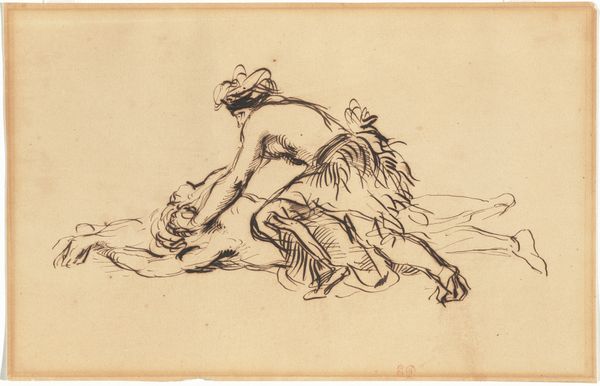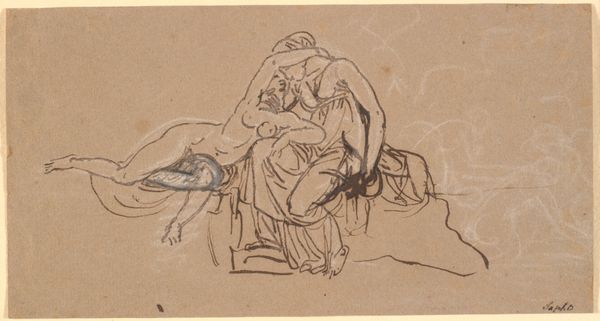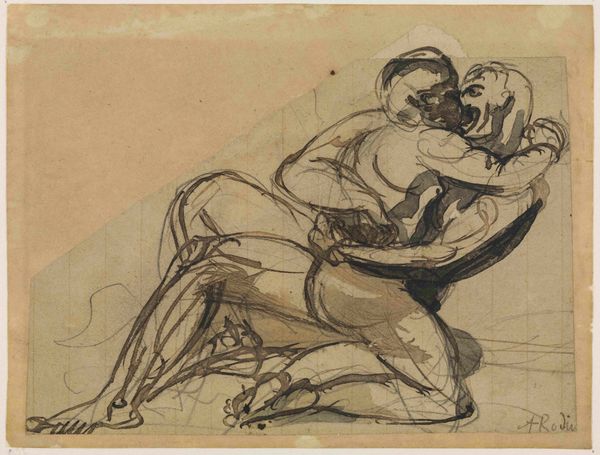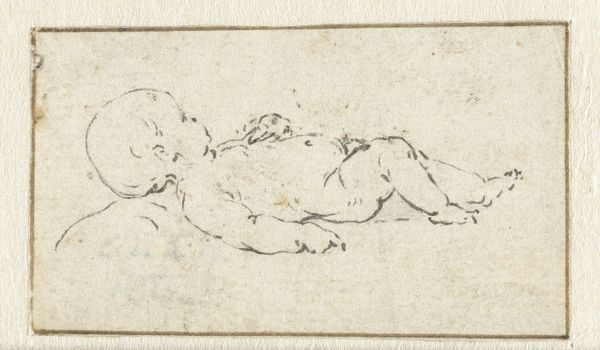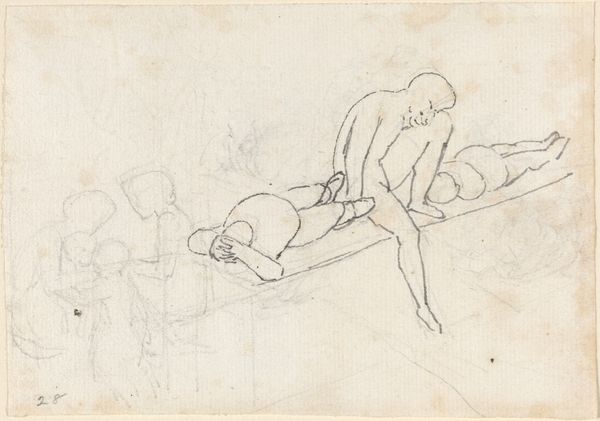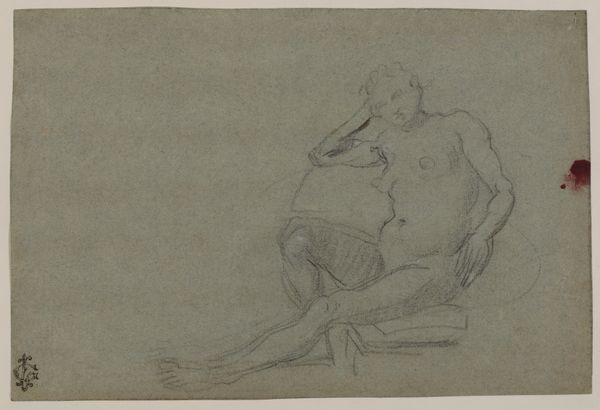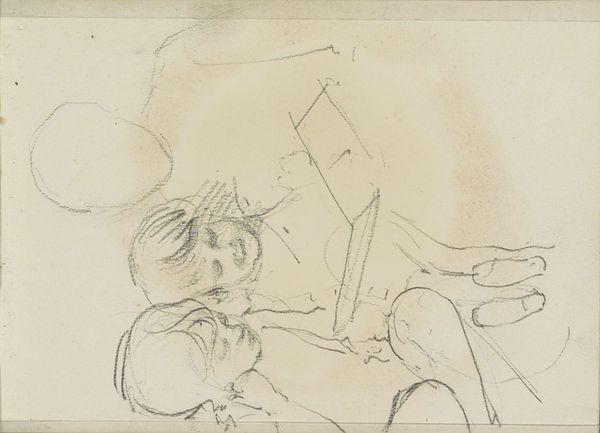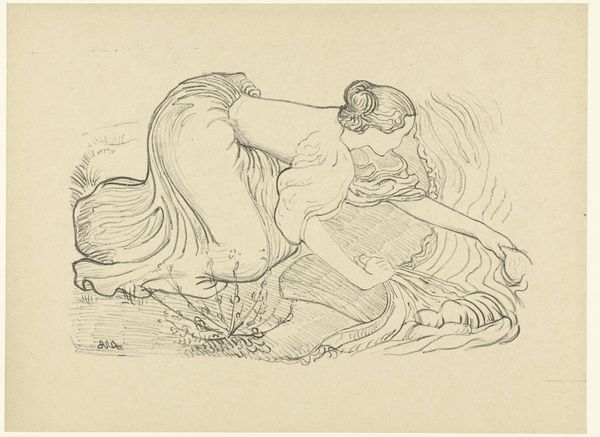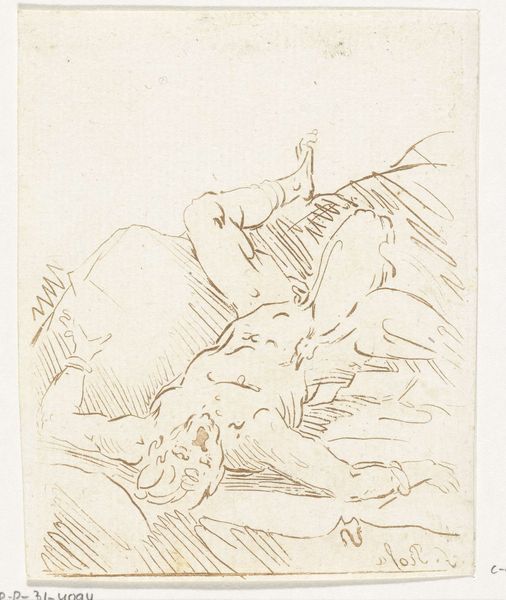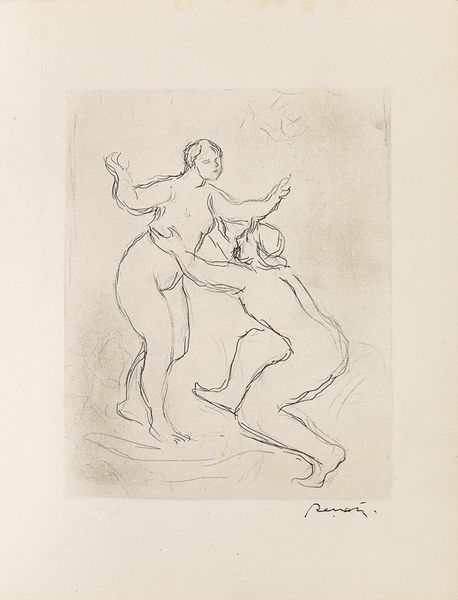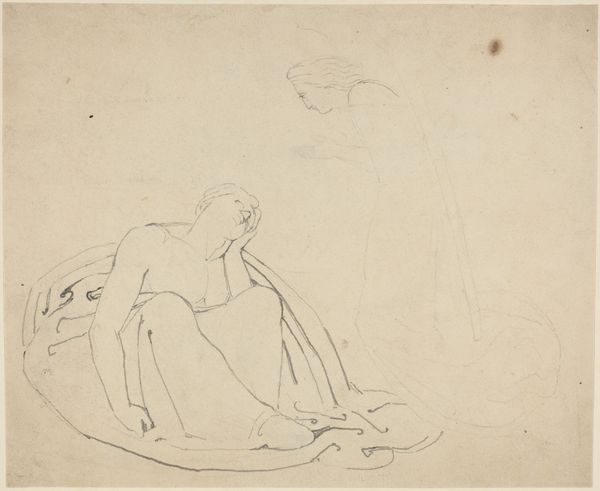
drawing, ink
#
drawing
#
figuration
#
ink
#
ink drawing experimentation
#
romanticism
#
history-painting
#
nude
Copyright: Public Domain: Artvee
Curator: Look at this drawing attributed to Théodore Géricault, simply titled, "A nude man mourning the death of another." It's an ink drawing, seemingly a quick study. Editor: My first impression? It feels incredibly raw and immediate, like a stolen glance at profound grief. The loose lines convey such vulnerability. Curator: Absolutely. Géricault, deeply involved in the social issues of his time, often explored themes of suffering and injustice. We should also consider Romanticism, where emotions reign supreme, individualism pushes against Enlightenment rationalism, and artists turn to revolutionary ideas, all as we try to consider this work's place. This piece, in particular, makes me consider masculinity, particularly how grief is performed—or repressed—within patriarchal structures. How can vulnerability and sorrow exist alongside displays of physical strength? Editor: The positioning of the figures is interesting, isn’t it? One figure, draped almost protectively over the other, reminds me of Pieta. The mourner's posture – head in his hand – suggests a timeless image of lamentation, present across so many cultures and eras. And the nudes themselves invite us to confront universal human emotions stripped bare. What classical allusions or contemporary concerns of its time, if any, do you think, play in the visual language of this sketch? Curator: I appreciate you mentioning classical art because it does bring forth visualisations of the dying body of the antique world—albeit one infused with a distinctly Romantic sensibility that underscores how it relates to more contemporary dialogues concerning suffering and mortality in art. The reference is apt given the social upheaval happening as well and can be read within social upheavals happening then or contemporary ones, if considered today. Editor: I think it serves as a potent reminder of how art can tap into deeply shared emotional and historical threads. It uses visual vocabulary that speaks volumes across generations. Curator: Right—we are reminded here of art's potent ability to evoke compassion across centuries, even within a seemingly simple sketch. Editor: Indeed, art like this seems to be a reminder of a connection we share across the ages, depicted through familiar images.
Comments
No comments
Be the first to comment and join the conversation on the ultimate creative platform.
